The Samsung Galaxy S6 and S6 edge Review
by Joshua Ho on April 17, 2015 9:00 AM EST- Posted in
- Smartphones
- Samsung
- Mobile
- Galaxy S6
- Galaxy S6 Edge
Final Words
There’s a lot that we’ve covered in the course of this review, so it’s well worth reviewing everything before coming to any sort of final judgment.
The first most critical aspect of the Galaxy S6 and S6 edge, more than any other, is the change in design. Samsung has clearly identified a problem in their previously iterative approach, and they reacted appropriately by completely changing the materials that they use in their phones, even if the overall industrial design clearly retains a link to past Galaxy phone designs. The metal and glass unibody design is surprisingly mature and a great change from the Galaxy S5 which was said to be a big change from previous phones with a “modern and glam” design which wasn’t really anything worth talking about.
The phone really does have a fascinating reflection under direct light that seems to be due to the coating underneath the glass, and the metal frame feels great on the Galaxy S6. However, the S6 edge feels extremely thin and uncomfortable to hold by comparison as the metal frame isn’t as well-rounded as it is on the Galaxy S6. The glass back cover also looks great, but I’m genuinely a bit concerned as it makes the phone quite slippery on tables or just about any surface with an incline. I would definitely consider a case for this phone if I bought it myself.
There is also the inevitable issue of repairability and the lack of features like the removable battery and microSD slot that seem to be critical to some segment of consumers. However I suspect that these features are binary in nature for most that really do care about these things, and that the simple lack of one or both of those features is enough to write off the device entirely. For those that don’t see these two things as critical to a phone, there’s definitely a lot to help make up for the loss of those two features. I suspect it would be helpful to add a microSD slot in a future Galaxy S phone, but for the average consumer it’s probably a fair bet that this would end up causing more problems than it would solve. The real solution here is to charge more reasonable prices for storage upgrades, as $100 to go from 32 to 64 GB is really a hard sell when some other phones go from 16 to 64 GB for the same price. Simply comparing the dollar per GB difference would suggest that one storage upgrade gives more value than the other, even if this comparison is relatively naive in nature.
Moving on to battery life, Samsung has managed to exploit their vertical integration to keep battery life effectively similar to the Galaxy S5, while using a higher resolution 1440p AMOLED display and a smaller battery than the one found in the Galaxy S5. I was doubtful that Samsung would be able to pull off this off, but they have and once again our results show that battery life is fundamentally more than just adding a larger battery. Given the size of the camera hump it may have made sense to add a larger battery to push the battery life benchmark even higher, but I suspect that the thickness and weight trade-off would’ve been significant given the L-shape PCB reducing the effective scaling factor of the battery.
To try and off-set the lack of removable battery, Samsung has also included QC 2.0 fast charging to make it possible to charge the battery as quickly as possible. Given the quick 1.5 hour full charge time, it’s fast enough that charging is no longer a real burden compared to a 2.5-3 hour charge time that can be seen on some other smartphones.
On the display side, I’ve found that the Galaxy S6’s display is even better than I first discovered, although there are a few issues. Overall, the brightness is basically as good as it gets on a flagship smartphone when using auto brightness, contrast remains impeccable and black levels are so low that the display is impossible to see in a completely dark room. Samsung has also resolved the purple-smearing issues that occurred when a black pixel was first lit which should help with applications like Gear VR as well. The color accuracy also remains more than good enough when in basic mode which should also be used to reduce power consumption.
However, there are some concerns that remain in terms of viewing angles, display variance, and fill factor. There’s very little luminance degradation with changes in viewing angles, but there’s noticeable interference patterns that appear especially at extreme angles that are distracting and cause problems on the curved edges of the S6 edge variant. There are also some issues with display variance that have appeared based on user reports, microscope photos of our GS6 sample, and display quality under strong sunlight it seems that the 1440p AMOLED display is harder to fabricate properly than one might hope. The microscope photo also shows the relatively low fill factor of the OLED display compared to LCD displays, which is a bit concerning as this would mean that this display in a VR application would still have significant screen-door effect independent of resolution unlike an LCD display which has comparatively little dark area.
In terms of system performance, the Exynos 7420 is going to be the SoC to beat in the Android space for at least the next six months. Samsung Systems LSI did a great job here as they managed to leverage the 14LPE process to deliver superior sustained performance and power efficiency in CPU workloads, and the GPU represents a solid bump over the T760MP6. I still suspect that we need a more meaningful GPU performance increase before we can actually talk about a 4K display, and even at 1440p we see that there’s a pretty significant impact to the higher rendering resolution that erases much of the advantages that come from the improved GPU.
With that said, there are still problems with Samsung Mobile’s drivers, as we see some pretty poor user experience from thermally throttled situations due to the oscillating behavior of GPU performance. Given the heat and performance issues I’ve seen on the Snapdragon 810, it’s really a bit of an easy win for the Exynos 7420 this generation. Meanwhile with the use of the new UFS NAND storage standard, the storage solution on the Galaxy S6 easily beats anything else shipping today when it comes to storage performance, which should help with keeping the UI fluid after 2-3 years of use.
There’s a lot to be said on the camera, but in short the camera of the Galaxy S6 is pretty much as good as it gets in the Android space, and can actually be compared in detail to iPhone cameras without constantly ending up on the losing side of that battle. Samsung has successfully fixed many of the pain points that were previously present in both the Galaxy S5 and Note 4 in terms of camera performance, and their processing has gotten noticeably less heavy-handed. But, there are still some problems present in the way Samsung does post-processing, some of which are trivial to eliminate and it remains surprising to me that Samsung hasn’t fixed these issues.
Video quality is also good, but Samsung needs to fine-tune how they do OIS with video and I suspect the real solution here is to rely on EIS in addition to OIS to make motion much smoother. The Galaxy S6 isn’t quite the best smartphone camera on the market, but they’re quite close to claiming that title. A larger pixel size would definitely help here to reduce the reliance on OIS and cover some of the remaining distance.
The TouchWiz experience has definitely been refreshed for the Galaxy S6, and while I appreciate their efforts there are still issues with how Samsung designs their applications. The default theme is still a bit childish in its color selection and icon design and even if the applications look like they fit in with Material Design they fundamentally violate accepted Android design conventions for how applications should behave and how they should be interacted with. Fixing these issues would go a very long way to reducing many of the complaints surrounding TouchWiz. TouchWiz also still has some lag despite the Exynos 7420 and everything else in the hardware to deliver high performance. However, to Samsung’s credit they’ve come a very long way from the Galaxy S4 days, and although I don’t rate TouchWiz as highly as something like Sense or AOSP UI, I wouldn’t have a problem with using it on my phone.
There are also some useful additions to the UI like the ability to log into websites using fingerprint authentication and the amazing Synaptics Viper fingerprint sensor. The MultiWindow UI is also finally well-designed in the past few iterations of TouchWiz, and it isn’t something that I have to constantly keep in mind to use rather than something I can access through the multitasking menu. I’m not really sure if it’s useful on a 5 inch display, but Samsung has effectively shown the rest of the world how to implement a good multi-window user experience even if the third party app support is almost non-existent.
I should also mention that there was zero user benefit to the edge display, and that I didn’t find a good use for any of the edge features in TouchWiz as I don’t really spend any real amount of time with my phone set face down on a table, nor do I need it for an alarm clock or for news. I wouldn’t bother with the S6 edge as the extra 100 dollar premium and worse ergonomics make it impossible to justify for me, but if the aesthetics are appealing enough I suspect that’s all the reason necessary to spring for it. I also see almost no benefit to the MST module as magstripe transactions will be obsolete by October of this year when United States banks switch over to chipped credit cards and will no longer accept liability for fraud in magstripe transactions.
In terms of the other remaining aspects, I didn’t find anything wrong with the cellular stack, nor the WiFi system in my experience. GNSS performance is also more than acceptable, although I suspect Qualcomm will retain their advantage here due to modem integration. There is the issue of the single downward firing speaker, which is a bit irritating to deal with compared to a front-facing speaker, but given everything else that the Galaxy S6 has to offer I would be willing to deal with this one disadvantage compared to some other phones on the market.
Taking everything together, the Galaxy S6 is the phone to beat right now. I’m not sure I’m the biggest fan of the glass back, but the display, camera, SoC, fingerprint sensor, battery life, and design are all strong points in favor of the Galaxy S6. In the past year, all of the Android flagships seemed to be missing some critical component to make them well-rounded. This year, Samsung is the first to get everything right. Given the direction of the smartphone market, I suspect that this consistency will determine who ends up on top in this highly competitive and saturated market. If the Galaxy S6 represents the direction that Samsung wants to take, it isn’t hard to see that they might succeed.


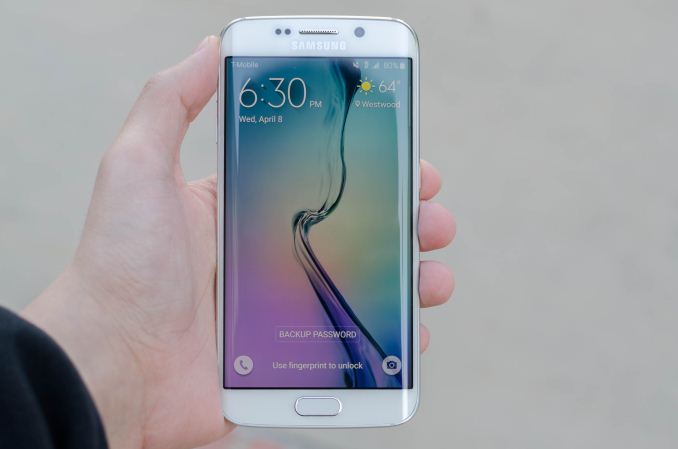
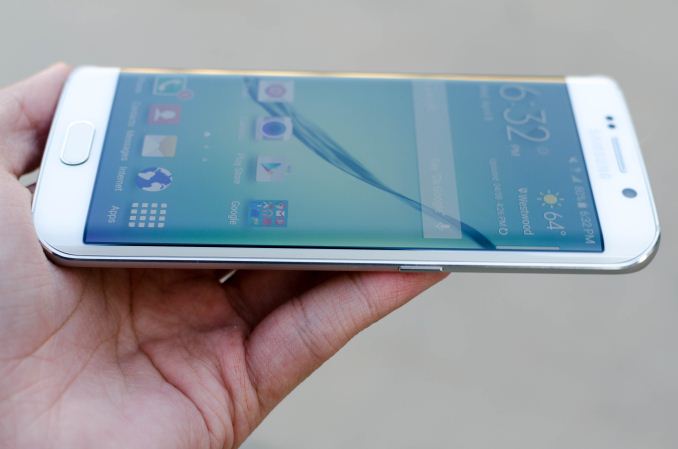
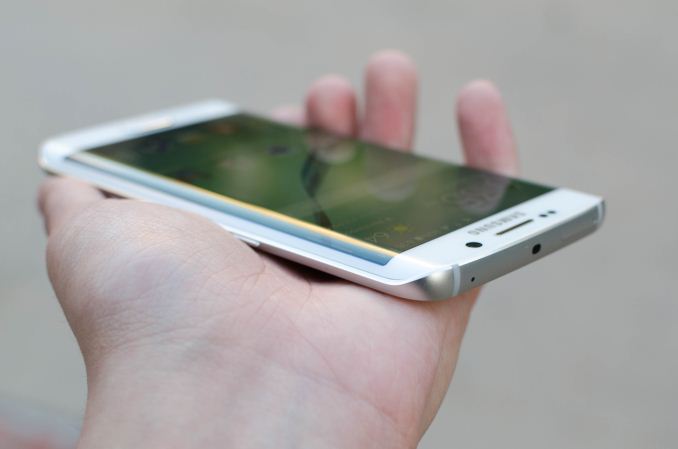
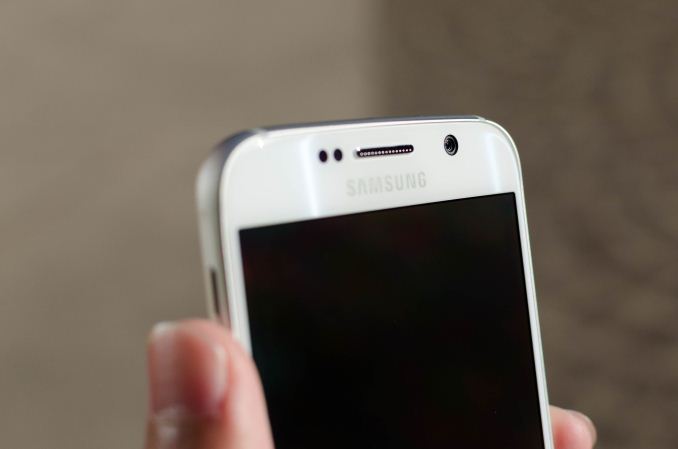
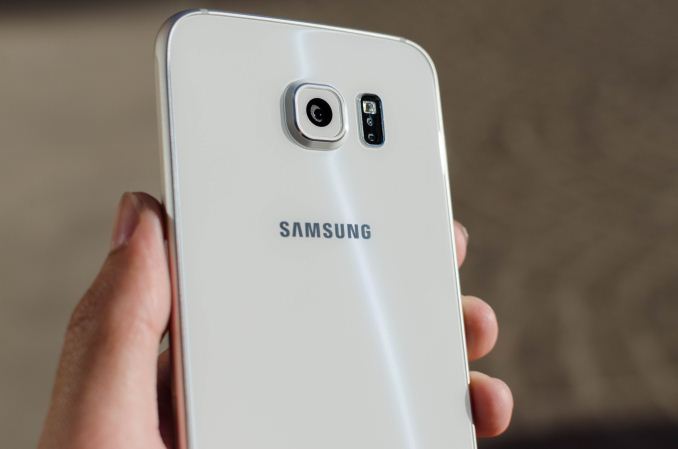
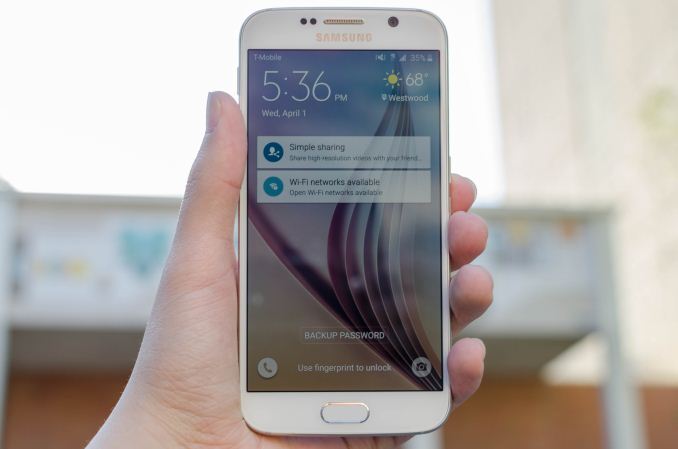

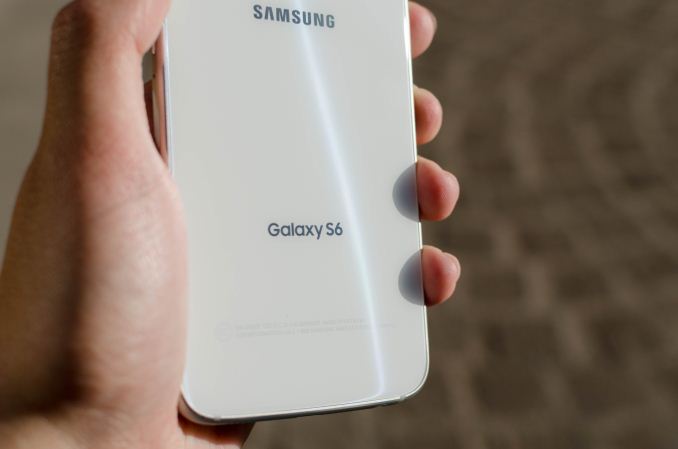








306 Comments
View All Comments
bogda - Saturday, April 18, 2015 - link
External SD on Android is mostly for media files so for me capacity is much more important than performance. Songs and videos will play the same regardless of SD speed.I am not going to watch video at 8x speed.Notmyusualid - Saturday, April 18, 2015 - link
To be honest, I'm happy you are happy with your purchase.To me, it looks gorgeous, but it seems a tiny step down from my GS5. No micro sd slot, no removable battery, no waterproofing (a big one this), and I notice the GFX Bench had worse battery life too.
That record charge time might persuade me, if I were to lose my GS5 drunk etc. But then a second-hand GS5 is a bargin now.
ethebubbeth - Friday, April 17, 2015 - link
My LG G3 has both removable battery and a microSD slot. Here's hoping they continue to carry the torch since it appears that Samsung has dropped it.Ammaross - Friday, April 17, 2015 - link
We'll find out at the end of the month when they announce the LG G4. I'm waiting to see/hear specs on it (officially) before pulling the trigger with an S6. The loss of the SD slot is a bit painful when you have to pony up an extra $100 for a measly extra 32GB....akdj - Friday, April 24, 2015 - link
Or two hundred for incredibly fast internal NAND storage, a bump of 96GB.I've owned each iteration of the Note (business line) except Note 2. Still have the Xoom. iPhones, same --- our employees carry them and I use the 6+ as my personal phone. I didn't upgrade Note 1 --> 2, as I couldn't get out of Note 1 quickly enough (contract). Slow as molasses. 2 changed that, and when it was time to get rid of it, the Note 3 was entirely new 'experience-wise' in comparison. Ten times quicker! I've had the Note 4 since release and I've found the further we move up in Android versions, the less 'control' I've had over where and what storage I'm able to keep on the microSD card
Media, for sure....but for two bills more, over two years is $8/month for 128 GB. I've got the 6+/128 and I've never felt pinched. Even with 3 & 4GB HD movie files I've not compressed. Battery life is incredible on both and other than extended oversea flights I've never had a problem. I also have a TB or 4 at home sharable to the remote phones and tabs from the house but I've never needed to re download extra music or motion while on holiday travel. Best to get out and see the scenery than watch our phones.
128 is a large chunk of internal data to hold. And it's 'not' expensive. If you're a DSLR shooter and use CF cards, motion, or proprietary capture (P2, SxS, RED's SSDs, etc.) --- you know how expensive a 'fast' card is. Even the quickest can't hold a candle to the latest Sammy and Apple MLC/TLC storage. Stairway to Heaven is going to sound the same when you get home but the ability to capture the shots you want, motion and speeds or different resolutions keep the internal NAND's speeds, reliability and prices continue to rise (first two), and drop (price) for these sealed, internal storage modules.
As for batteries ...I've also owned each iPhone and other than Mophie cases on the smaller phones, I've found no such need on the 6+, from the scores shown here...that'll be the case with the S6 as well.
Peichen - Saturday, April 18, 2015 - link
Seems like LG G4 will have removable back, battery and a microSD slot according to leaks.Lonyo - Friday, April 17, 2015 - link
They lost me. My new phone (replacing an S3) arrived yesterday. It has a MicroSD slot and a removable battery.I'm using a MicroSD card in it. It's the one I had in my S3.
Samsung want me to pay $200 premium to upgrade from 32GB to 128GB when I already own 128GB of phone-compatible storage. They can shove it.
Notmyusualid - Saturday, April 18, 2015 - link
+1juxt417 - Wednesday, April 22, 2015 - link
Hope you have everything backed up for if/when that bad boy fails. I gave up on SD cards after mine burnt out.ahw - Friday, April 17, 2015 - link
SD Card slot is the bigger issue, IMO. Samsung has already lost a customer: me. I have an S4 and am eligible for an upgrade. It won't be the S6.